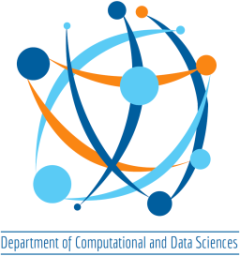[M.Tech. Project Topics] | [Project Topics from Jan, 2016] | [Project Topics from Jan, 2015]
M.Tech. Computational Science Project Proposals
Jan 2014 – June 2014
- Faculty: S. K. Nandy & J. Lakshmi
- Spatial Big Data challenges – Security concerns
- How must the personal data of the user be obfuscated to allow decision making without revealing too much information on the end-user?
- HPC-Cloud — a PaaS perspectivening
- Can cloud systems characteristics be extended to HPC data centers using the PaaS model?
- Flexible hypervisors
- Design of a flexible hypervisor for reconfigurable virtualized hardware.
- Faculty: Venkatesh Babu
- Object Detection/Classification using Deep Learning: Recent developments in “Deep Learning” have shown the possibilities of capturing high-level representation of object parts via hierarchies of features. This project aims to develop effective deep learning techniques for object detection and classification.
- Biometrics based Authentication and Identification: Biometric systems are gaining popularity due to its reliability, advancement in technology and falling cost of sensors. On the other hand, the conventional password based systems are getting more and more vulnerable and is not user friendly since one has to remember all the passwords for various logins. Since sensors like cameras (including depth cameras), microphone, scanners have now become commonplace, research towards developing robust authentication system has gathered momentum. This project aims to explore the visual/depth information obtained from the sensors to design a multi-modal biometric authentication system that is very reliable and user friendly.
- Video Summarization: With the rapid growth in user-generated videos, it is becoming crucial to navigate them quickly and efficiently. This project aims to develop algorithms that capture maximum information with minimal frames considering the poor quality of the video.
- Blind Image Quality Assessment: Image quality assessment has been recently gaining attention due to the growing number of cameras and smart phones. The quality of the image captured depends upon various factors including the lens properties, sensor noise, blur and compression artifact. This project aims to develop algorithm that can estimate the quality of the image without any reference original image.
- Faculty: Sathish Vadhiyar
- Performance characterization and prediction of parallel applications: The objective of the project is to predict the performance of large-scale parallel applications for larger problem sizes and number of processors using limited (in most cases, only one) profiling runs with smaller problem sizes and number of processors. This work requires auto-identification of application kernels (functions), and matching execution signatures of different kernel implementations. The work done here will be ultimately used in predicting performance of production supercomputer jobs.
- Hybrid executions of graph applications on GPU systems: This project deals with efficient executions of graph applications including BFS, SSSP, MST, Satisfiability, Delaunay triangulation and refinement on GPU systems utilizing both CPU and GPU cores simultaneously/asynchronously. The project will develop common strategies or a generic framework that will be applicable for multiple applications.
- Efficient executions of different programming models on GPUs: The project will build various optimization strategies for efficient executions of different programming models and languages including Cilk, PGAS, UPC, Galois, X10 and others. The project will study the impact of different optimization techniques on the different models.
- Faculty: Murugesan Venkatapathi
- Analysis of numerical solutions to Sommerfeld integral relation: Sommerfeld integrals relate a spherical wave from a point source to a convolution set of plane and cylindrical waves. Among others, it is significant for theoretical studies of many physical phenomena involving surfaces. This relation does not have analytical solutions but it submits to numerical approximations. An analysis of existing numerical methods to compute these solutions, and a study on improvements in accuracy and convergence is the subject of the proposed project.
- Numerical analysis of error estimation algorithms and iterative methods for linear systems: Estimation of actual errors from the residue in iterative solutions, is significant for efficient solution of large linear systems of unknown condition (numbers). In the recent past we have developed estimators of error for generalized linear sytems (non-symmetric, indefinite etc.) and further, bounds of these errors can be added. Related topics include estimation of extremal eigen values and condition number of matrices, and analysis of iterative methods for linear systems.
- Faculty: Yogesh Simmhan
- Robust Scheduling of Continuous Dataflows on Elastic Cloud Infrastructure
- Scalable Software Platform for Cyber Physical Systems across Client+Cloud
- Realtime Analytics over Continuous Data using Stream and Complex Event Processing
- Efficient Resource Allocation for Graph Analytics on Hybrid Clouds
- Faculty: Phaneendra K. Yalavarthy
- Signal Processing Based Analysis of Photoacostic Imaging: Photoacoustic imaging is a scalable biomedical imaging modality that has applications starting from skin imaging to breast cancer screening. The photoacoustic imaging system matrix can be built using impulse responses of each image pixel, making in linear time-invariant (LTI) system. This project aims at analysing these impulse responses from the signal processing principles and explores the possibility of arriving at a convolution based (fourier space) image reconstruction.
- Evaluation of Compressive Sensing Data Collection Strategies for Biomedical Imaging: Compressive sensing has revolutionised the biomedical imaging in terms of speeding up the acquisition and lowering the instrumentation cost due to its requirement of having lower data compared to traditional imaging. The compressive sensing algorithms performance largely dependent onthe incoherence of the available limited data and the standard of acquisition of this limited data is do random sampling. Recent developmentshave been focussing on lowering the algorithm complexity for biomedical image reconstruction, with greedy algorithms being the most sought after ones. This project will look at the data space and evolve strategies to effectively assess the data collection strategies without performing the image reconstruction step. These kind of evaluations are necessary in imaging the humans, as the true (or expected) image is unknown.
- Faculty: G. Sashikumaar
- Capillary effects on deformation of a liquid droplet in an electric field: Liquid droplet spreading or recoiling over a solid surface induces a dynamic contact angle at the moving contact line. The wetting and non-wetting properties of the droplet are realized in the mathematical model through the contact angle value. Thus, the accurate inclusion of the contact angle is very crucial in computations. In addition, the presence of electric field increases the complexity of the model. The main equations governing this flow are the incompressible Navier-Stokes equations and scalar equations for electric potential. The finite element method with the Arbitrary Lagrangian-Eulerian (ALE) approach will be used to solve these equations. The main aim of this project is to study the capillary effects on these droplets.
- Efficient FSI solver for large-scale problems: Fluid-Structure Interaction (FSI) problems are encountered in many scientific, industrial and engineering applications. For instance, the numerical simulation of FSI problems are highly demanded in flutter analysis, parachute dynamics, hemodynamics, etc. Thus, the development of efficient and reliable FSI solvers received a lot of attention in recent times. Modeling of FSI consist fluid dynamics and structure mechanics models that describe the fluid flow and the deformation of the structures, respectively. In this project, an efficient monolithic FSI solver for the large-scale system arising from the finite element discretization has to be developed.



